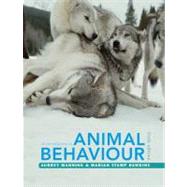
Note: Supplemental materials are not guaranteed with Rental or Used book purchases.
Purchase Benefits
What is included with this book?
| Preface | p. ix |
| Introduction | p. 1 |
| Questions about animal behaviour | p. 5 |
| The escaping cockroach | p. 7 |
| The courtship of the sage grouse | p. 11 |
| Units of the nervous system | p. 16 |
| Reflexes and more complex behaviour | p. 20 |
| Diversity and unity in the study of behaviour | p. 30 |
| Summary | p. 31 |
| The development of behaviour | p. 33 |
| Young animals grow up | p. 34 |
| Instinct and learning in their biological setting | p. 40 |
| The characteristics of instinct and learning | p. 45 |
| Genetics and behaviour | p. 49 |
| Development and changes to the nervous system | p. 57 |
| Hormones and early development | p. 62 |
| Early experience and the diversity of parental behaviour | p. 68 |
| Play | p. 78 |
| imprinting | p. 84 |
| Bird song development | p. 94 |
| Conclusions | p. 06 |
| Summary | p. 106 |
| Stimuli and communication | p. 109 |
| What stimuli are and how they act | p. 111 |
| Diverse sensory capacities | p. 114 |
| The problem of pattern recognition | p. 126 |
| Sign stimuli (key features) | p. 128 |
| 'Supernormal' stimuli | p. 130 |
| Neuroethological basis of sign stimuli | p. 135 |
| Other solutions for pattern recognition: generalized feature detection | p. 139 |
| Communication | p. 144 |
| What is communication? | p. 145 |
| Animal signals as effective stimuli | p. 150 |
| Honesty and deception in animal signalling | p. 159 |
| The honeybee dance | p. 164 |
| The calls of vervet monkeys | p. 173 |
| Summary | p. 177 |
| Decision-making and motivation | p. 179 |
| Decision-making on different time scales | p. 182 |
| Decision-making and 'motivation | p. '193 |
| Measuring motivation | p. 193 |
| Is motivation specific or general? | p. 199 |
| Goals as decision points | p. 202 |
| Homeostasis and negative feedback | p. 205 |
| Competition between motivations | p. 209 |
| InMbition/msinhibition | p. 211 |
| Decision-making with incomplete information: the role of signals | p. 213 |
| Conflict and'abnormal'behaviour | p. 217 |
| The physiology of decision-making | p. 220 |
| Hormones and sequences of behaviour | p. 227 |
| Conflict and physiological stress | p. 232 |
| Decision-making, motivation and animal welfare | p. 233 |
| Conclusions | p. 236 |
| Summary | p. 237 |
| Learning and memory | p. 239 |
| Learning as part of adaptation | p. 239 |
| Sensitization and habituation | p. 242 |
| Associative learning | p. 246 |
| Specialized types of learning ability | p. 257 |
| What do animals actually learn? | p. 262 |
| Are there higher forms of learning in animals? | p. 264 |
| The comparative study of learning | p. 268 |
| Social learning and culture | p. 272 |
| The nature of animal minds | p. 276 |
| The nature of memory | p. 294 |
| Summary | p. 298 |
| Evolution | p. 301 |
| The adaptiveness of behaviour | p. 302 |
| Genes and behavioural evolution | p. 310 |
| Kin selection and inclusive fitness | p. 316 |
| Evolutionarily stable strategies | p. 328 |
| Sex1 and sexual selection | p. 336 |
| Species isolation and species selection | p. 345 |
| Tinbergen's fourth question: the phylogeny of behaviour | p. 348 |
| Summary | p. 353 |
| Social organization | p. 355 |
| The individual in the crowd | p. 355 |
| Advantages of grouping | p. 358 |
| Diverse social groups | p. 364 |
| Eusociality: division into castes | p. 364 |
| Territory in the social organization of vertebrates | p. 369 |
| Mating systems and social organization | p. 373 |
| Dominance in social systems | p. 378 |
| Diverse mammalian social behaviour | p. 381 |
| Primate social organization | p. 388 |
| Summary | p. 403 |
| References | p. 405 |
| Figure credits | p. 435 |
| Index | p. 442 |
| Table of Contents provided by Ingram. All Rights Reserved. |
The New copy of this book will include any supplemental materials advertised. Please check the title of the book to determine if it should include any access cards, study guides, lab manuals, CDs, etc.
The Used, Rental and eBook copies of this book are not guaranteed to include any supplemental materials. Typically, only the book itself is included. This is true even if the title states it includes any access cards, study guides, lab manuals, CDs, etc.